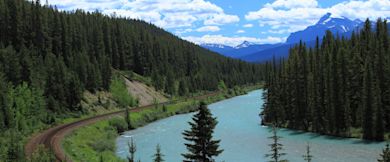- News and articles
- Events
- Find usIDP AustraliaIDP BahrainIDP BangladeshIDP CambodiaIDP CanadaIDP ChinaIDP EgyptIDP GhanaIDP Hong KongIDP IndiaIDP IndonesiaIDP IranIDP JordanIDP KenyaIDP KoreaIDP KuwaitIDP LebanonIDP MalaysiaIDP MauritiusIDP Middle EastIDP NepalIDP New ZealandIDP NigeriaIDP OmanIDP PakistanIDP Saudi ArabiaIDP SingaporeIDP Sri LankaIDP Taiwan, ChinaIDP ThailandIDP TurkeyIDP UAEIDP VietnamIDP Corporate
- Social
- English
Topics covered
- Published: 6 June 2024
Living in an urbanised and concrete jungle like Singapore with limited natural environments, you have a great opportunity in Australia to explore the great outdoors, nature and wildlife. Discover the unique wildlife, spectacular landscapes and some of the world’s most distinctive and diverse natural environments. There are many places in Australia where you can visit and spend some time doing outdoor activities during the weekend before returning to your hectic schedule of university. By visiting the Parks Victoria website, you can find the one that suits you best, because there are many parks for you to choose from. So put on your adventure gear, go discover and explore the great outdoors! Be sure to keep a look out for some of the best-known animals that are native to Australia: kangaroo, koala, echidna, dingo, platypus, wallaby and wombat (Tourism Australia, 2017).
A unique experience – connecting with nature
National parks in Australia offers a unique experience. These unique experiences and interactions can help promote our personal connection with nature as the aesthetic appreciation for place can be further through sensory engagement with nature (Brady, 2003). Likewise, through outdoor experiences, we can examine our values, ethics and worldviews about the natural world. We can develop a positive relationship with nature when we reflect on the experience, think deeper about our values and beliefs.
The relationship between humans and nature are complex. Everyone forms their personal worldview based on beliefs, values, life experiences and knowledge. Similarly, it is influenced by social norms, cultural values, religious beliefs and education. As a result, different people demonstrate it differently in their daily behaviours and actions. The destiny of humans on this planet will be determined by the action towards the Earth. ‘Action’ can be taken every day by us! This is by changing our lifestyle and caring for our environment together. We can create a sustainable ecosystems when we based our collective actions on a sound environmental ethic (Knapp, 1999).
To conclude, our environmental worldviews are shape by the experience and interaction with nature. Likewise, the environment is shaped by our views and practices.
References
Brady, E. (2003). Aesthetics of the natural environment. Cornwall Great Britian: Edinburgh University.
Falls Creek. (2015). Retrieved from https://www.fallscreek.com.au/
Knapp, C. (1999). In accord with nature: Helping students form an environment ethic using outdoor experience and reflection. Charleston, West Virginia: ERIC, Clearinghouse on Rural Education and Small Schools.
Murray Regional Tourism. (2016). Visit the Murray. Retrieved from https://www.visitthemurray.com.au/
Parks Victoria. (2016). Alpine National Park. Retrieved from https://parkweb.vic.gov.au/explore/parks/alpine-national-park
Parks Victoria. (2016). Mount Arapiles-Tooan State Park. Retrieved from https://parkweb.vic.gov.au/explore/parks/mount-arapiles-tooan-state-park
Tourism Australia. (2017). Australia’s animals. Retrieved from https://www.australia.com/en-sg/facts/australias-animals.html
One account for all your study abroad needs
Create your profile and unlock a wide array of features including personalised recommendations, fast-tracked applications and much more.
Search for articles
Dive into our extensive collection of articles by using our comprehensive topic search tool.















